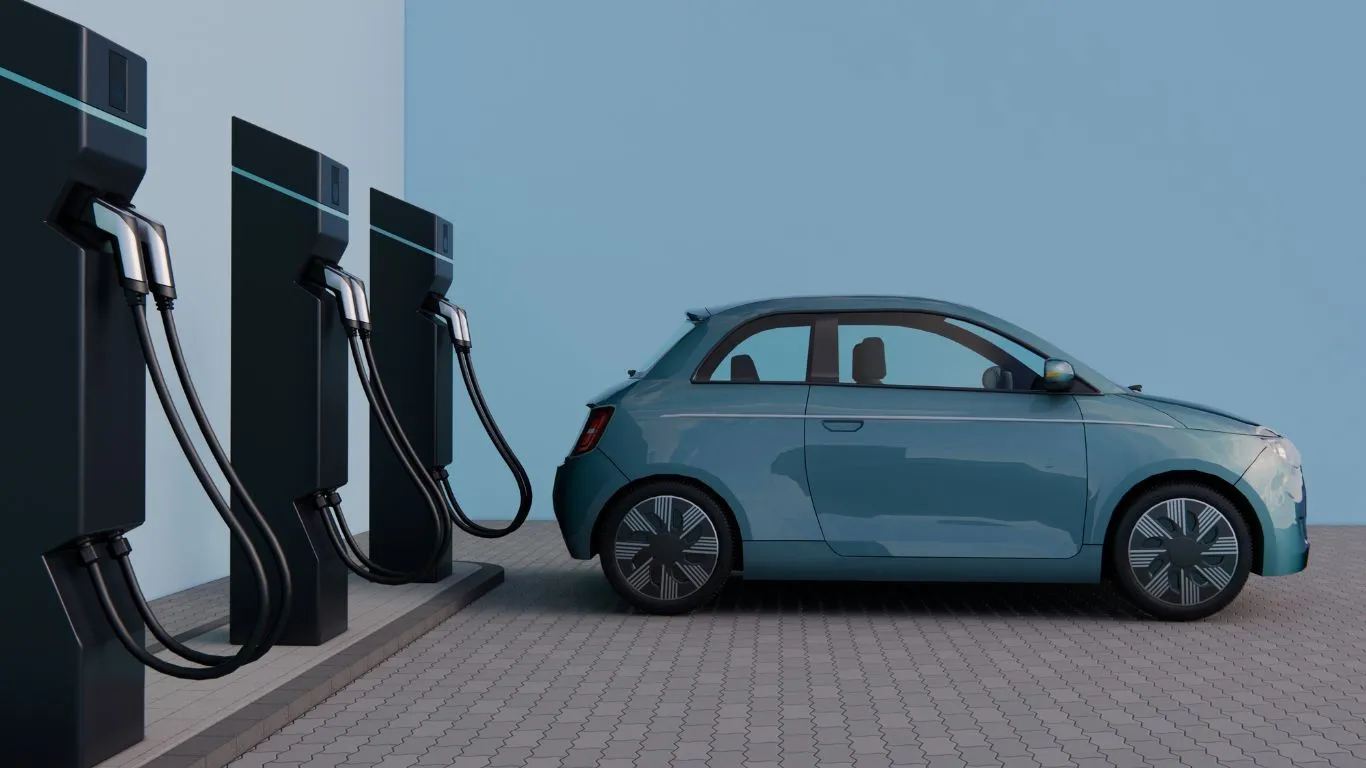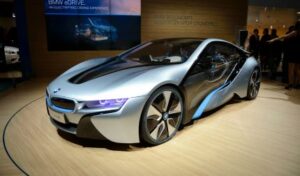Ever wondered about what makes a hybrid vehicle tick? Intrigued by the almost magical balance of gasoline and electric energy that leads to a promising drive? Well, you’ve arrived at the right place! Herein, we’re going to demystify the concept of hybrid technology for you, making it simple and easily digestible.
We’ll be exploring the numerous benefits hybrids introduce—both for our environment and your pocket. Additionally, we’ll explore how this amazing technology might just be the first step we need to take towards a future where only fully electric vehicles exist. So buckle up for an exciting journey into the heart of hybrid technology!
Introduction: The Evolution of Hybrid Technology
Let’s dive into the fascinating world of hybrid technology. Born from the marriage of conventional internal combustion engines and electric propulsion systems, hybrid technology serves as an essential intermediate step as we steadily journey towards an all-electric future. Recognizing the importance of this technology and how it plays a pivotal role in the future of automotive technology will enable us to comprehend how hybrid technology serves as a stepping stone towards fully electric vehicles.
The Intricacies of How Hybrid Technology Works
Hybrid vehicles cleverly employ a dual propulsion system- an internal combustion engine and an electric motor. They are designed to switch between these power sources or combine them, enhancing power delivery while conserving fuel. The electric motor is used during low speed or city driving, while the engine takes over for higher speed driving or when additional power is required. Remarkably, the system can also regenerate power through a process called regenerative braking, storing it in a battery for later use.
The Unquestionable Benefits of Hybrid Technology
Aside from the obvious fuel-efficiency that hybrid technology provides, there are several other advantages. First, there’s a reduction in harmful emissions- a critical step towards combating climate change. Second, the silent operation of the electric motor offers a quieter ride, reducing noise pollution. And last but not least, hybrids also provide increased torque, leading to better overall performance.
Hybrid Technology as a Stepping Stone Towards Fully Electric Cars
The development and acceptance of hybrid technology have paved the way for fully electric cars. It serves as a crucial stepping-stone, helping consumers adapt to electric vehicles and accelerating the acceptance of cleaner, electric-powered transportation. As battery technology continues to improve and the necessary infrastructure for charging develops, we can expect hybrid technology to gradually give way to fully electric vehicles.
The Basics: What is Hybrid Technology?
Hybrid technology is a term often used to denote the technology used in vehicles that use two or more distinct types of power, such as an internal combustion engine combined with an electric motor. The goal of this technology is to bring together the best of both worlds – the long-distance capabilities and the convenience of internal combustion engines together with the environmental friendliness and fuel economy of electric motors.
Anatomy of a Hybrid Vehicle
At its core, a hybrid vehicle utilizes two power sources – an internal combustion engine and an electric motor. Energy is stored in a high-capacity battery pack that powers the electric motor. The internal combustion engine kicks in when the vehicle demands higher power or when the battery’s power level becomes low. Some hybrid vehicles can operate using both power sources together for better performance.
Types of Hybrid Vehicles
Hybrid vehicles can be categorized into two main types: Parallel and Series. A Parallel hybrid has both the engine and electric motor connected to the wheels and can be powered either separately or together. On the other hand, a Series hybrid exclusively uses the electric motor to drive the vehicle, while the gas engine is used for power generation.
Hybrid Vehicle Regenerative Braking System
A characteristic feature of hybrid technology is the regenerative braking system. This system harnesses energy during braking, which would otherwise be wasted, and converts this energy into electricity to charge the vehicle’s battery. This process significantly enhances fuel efficiency and makes hybrids an exceptional choice for city driving.
Plug-In Hybrid Vehicles
There’s also a subset of hybrids known as Plug-In Hybrids (PHEVs). These vehicles can be plugged into an electric outlet to recharge their batteries, just like a fully electric vehicle. This feature allows them to drive extended distances using just electric power, contributing to even greater fuel efficiency and lower emissions.
The Advantages of Hybrid Vehicles
Stepping into the realm of hybrid vehicles opens up a world of benefits, fostering both personal and environmental well-being. The manifold advantages of hybrid vehicles are undeniably substantial, justifying their soaring popularity in the global market. Now, let’s delve into the specifics of these benefits, providing a deeper understanding of this contemporary technology.
Fuel Efficiency and Cost Savings
At the heart of hybrid vehicles’ appeal lies their exceptional fuel efficiency. Employing a combination of a gas engine and an electric motor, these vehicles optimise fuel usage to achieve remarkable miles per gallon (mpg) figures. This directly translates into significant cost savings due to reduced refueling needs, making hybrid technology an economically smart choice.
Reduced Carbon Footprint
On a broader scale, hybrid vehicles play a crucial role in reducing greenhouse gas emissions. By utilizing their electric engines in city driving, where stop-and-start traffic is common, they substantially decrease their carbon output. This function is undoubtedly a huge leap towards a more sustainable future.
Government Incentives and Rebates
Government bodies across the globe are increasingly recognizing the positive impacts of hybrid technology, leading to the provision of various incentives and rebates for hybrid vehicle usage. These perks, which could range from tax credits to waivers on parking fees, substantially offset the initial investment, making these vehicles an even more cost-effective option.
Resale Value
Given the ever-growing demand for fuel-efficient vehicles, hybrids tend to hold their value better over time than conventional cars. This robust resale value makes hybrid ownership a prudent and profitable investment.
Versatility
One of the most exciting aspects of hybrid technology is its versatility. With options ranging from compact cars to SUVs, there truly is a hybrid to suit every lifestyle. The wide range of hybrid vehicle models ensures that everyone can reap the benefits of this progressive technology.
Reducing Emissions: How Hybrid Technology is Environmentally Friendly
When it comes to reducing greenhouse gas emissions, hybrid technology plays an instrumental role, offering a more environmentally friendly option for transportation. These cars use a combination of fossil fuels and electric power, balancing performance and efficiency. This significantly reduces carbon emissions, granting them a favorable reputation amongst those concerned with environmental sustainability. Let’s dive deeper into how hybrid technology contributes to this eco-friendly outlook.
Lower Greenhouse Gas Emissions
Hybrid cars produce considerably fewer greenhouse gases compared to conventional vehicles. This is attributed to their dual power sources – a traditional internal combustion engine and an electric motor. Their ability to switch between these two sources or use them simultaneously based on driving conditions results in lower emissions.
Optimal Fuel Efficiency
One of the hallmarks of hybrid vehicles is their improved fuel efficiency. The electric motor can operate on its own during low-speed driving, which is often the case in city traffic. This results in significant fuel savings and, consequently, reduced emissions. Moreover, regenerative braking in hybrid cars further enhances their efficiency by capturing and recycling energy.
The Role of Auto Start-Stop
In hybrid vehicles, the auto start-stop feature can shut down the engine when the car is stationary, such as at a red light, and restart it when the driver presses the accelerator. This eliminates unnecessary idling and thus reduces harmful emissions.
Energy Conservation
Hybrid technology conserves energy by transforming brake energy into electric energy for storing in the battery, which can be used when needed. This energy regeneration process enhances the efficiency of the vehicle, leading to less fuel consumption and, therefore, lower emissions.
Increased Fuel Efficiency: The Economic Benefits of Hybrid Vehicles
Hybrid vehicles have a host of economic benefits, going beyond just saving on fuel costs. They offer cost-saving opportunities that conventional cars can’t match thanks to their unique ability to switch between gasoline engines and electric motors. Let’s delve deeper into the financial advantages hybrid vehicles offer.
Extended Vehicle Longevity
Hybrid vehicles typically have longer life spans compared to conventional counterparts because less strain goes on the gas engine thanks to the electric motor. This not only allows for better vehicle performance over time but also leads to less frequent and lower cost maintenance.
Lower Operating Costs
Hybrid cars run in part on electricity, which costs significantly less than gasoline per mile. Owners can expect lower costs for running their vehicles, especially if they have the ability to charge their vehicle at home or work.
Lower Insurance Premiums
Many insurance companies offer discounts for hybrid vehicles due to their safety features and environmental benefits. Therefore, not only do you save on fuel, but your insurance expenses may go down as well.
Tax Benefits
Some governments offer enticing tax benefits and incentives to hybrid vehicle owners. These incentives are designed to encourage more people to opt for environmentally friendly transportation options, creating a win-win situation for you and the planet.
High Resale Value
Hybrids often retain their value better over time because they’re still considered relatively technology-forward and are in high demand due to their fuel efficiency. So, when the time comes to upgrade, you could get a better return on your initial investment.
Regenerative Braking: Harnessing Energy to Improve Efficiency
Regenerative braking, a salient feature of hybrid technology, is an innovative system designed to recover and reuse energy that is typically wasted during braking. It provides numerous benefits, such as improving fuel efficiency, extending battery life, and ultimately contributing to a more sustainable driving experience.
How Regenerative Braking Works
Regenerative braking functions by transforming kinetic energy into electric energy. When a driver applies the brakes, instead of generating heat as with standard braking systems, the energy is converted or ‘regenerated’ into electricity. This electricity is then stored in the vehicle battery for use when needed, such as during acceleration or powering onboard.
Better Energy Efficiency
By capitalizing on the energy that traditional systems waste, regenerative braking enhances the overall fuel efficiency of hybrid vehicles. It provides more range from the same amount of fuel compared to conventional cars, thereby reducing consumption and promoting cost savings for drivers.
Extended Battery Life
By constantly feeding electricity back into the battery, regenerative braking helps to maintain the battery’s charge and prolong its service life. This reduces both the frequency and cost of battery replacements – a big win for vehicle owners in the long run.
Environment Friendly
Utilizing regenerative braking ultimately supports environmental sustainability. By optimizing energy use and reducing the need for frequent battery replacements, these systems reduce waste and lower a vehicle’s carbon footprint. They represent a significant step forward in making transportation more eco-friendly.
The Role of Electric Motors in Hybrid Vehicles
As an integral part of hybrid technology, electric motors play a pivotal role in the operational efficiency and overall performance of hybrid vehicles. Alongside internal combustion engines, they uniquely contribute to the green attributes and fuel-saving benefits of hybrid vehicles. Now, let’s delve into their functionality and importance.
Functionality of Electric Motors in Hybrid cars
Electric motors in hybrid vehicles assist or, in some cases, take over the internal combustion engine’s work. Their primary function involves powering the car during low speeds or when accelerating, sparing significant energy and consequently enhancing fuel efficiency.
Performance Enhancement
Hybrid cars’ electric motors aren’t just making them green; they’re also giving them a performance boost. The instant torque provided by electric motors can improve the vehicle’s acceleration, making hybrid vehicles surprisingly swift on the road.
Energy Conversion – Two-Way Street
Unlike regular motors, the electric motors in hybrid vehicles have a dual role; they not only consume energy to create motion but also generate energy during deceleration or braking using technology like regenerative braking. This smart conversion significantly extends the battery life and vehicle’s range.
Reduced Dependence on Fossil Fuels
The inclusion of electric motors in hybrid vehicles reduces their dependency on gasoline. It signifies critical progress towards sustainable mobility by substituting a substantial portion of fossil fuel energy with clean, renewable electricity.
Understanding the Different Types of Hybrid Systems
As you dive into the world of hybrid systems, you’ll quickly discover there’s more than one kind. Each type has its unique characteristics, specifically designed to optimize performance and save energy under varying circumstances. Getting acquainted with these different types of hybrid systems can help you appreciate the complexity behind this green technology, as well as understand the potential advantages and disadvantages of each. Let’s get started!
Series Hybrid System
The series hybrid system exclusively uses an electric motor for propelling the vehicle. The gasoline engine is not connected to the wheels directly but is designed to charge the battery pack. This setting can be beneficial in slow, city driving where frequent start-stop conditions are experienced.
Parallel Hybrid System
In a parallel hybrid system, both the gasoline engine and electric motor are connected to the wheels and can simultaneously exert power. One can work while the other is idle depending on the driving condition. This system often favours highway driving as the gasoline engine can operate at high speeds, improving fuel economy.
Series-Parallel Hybrid System (Full Hybrid)
Combining the best of both worlds, the series-parallel, or full hybrid system, flaunts flexibility. It allows the gasoline engine to either drive the wheels directly or power the electric generator, depending on the speed and load of the vehicle. At low speeds, it operates as a series hybrid, while at high speeds, it functions as a parallel hybrid.
Mild Hybrid System
A mild hybrid system has an electric motor that assists the gasoline engine, resulting in fuel savings and performance optimization. However, unlike in full hybrids, the electric motor alone cannot power the vehicle. The system is often used as a supplement to reduce the strain on the gasoline engine during acceleration..
Parallel Hybrid vs. Series Hybrid: Which is Better?
Choosing between a parallel hybrid or a series hybrid vehicle may be challenging, considering their individual benefits. While both hybrid designs strive for the same goal, reducing reliance on fossil fuels and enhancing vehicle efficiency, the way they achieve this goal uniquely defines their strengths and weaknesses. These differences influence the driving experience, efficiency, and cost-effectiveness of the vehicle.
Operational Methodology
In a parallel hybrid, the gasoline engine and the electric motor work concurrently to power the vehicle, enabling efficient long-distance travel and high-speed performance. This setup is typically cheaper, lighter, and more straightforward than the series counterparts. On the other hand, series hybrids utilize their electric motor as the primary source of propulsion, with the gasoline engine only used to recharge the battery, offering optimal fuel efficiency during shorter, city travels.
Battery Capacity and Ranges
Series hybrids usually boast larger battery capacities than parallel hybrids, enabling longer electric-only driving ranges. Consequently, they might be more suitable for movers that make frequent short journeys, effectively keeping fuel costs low by staying in electric mode. However, parallel hybrids, due to their balanced use of both engine and motor, may offer more extended total ranges, making them ideal
Plug-In Hybrids: A Bridge Between Conventional and Electric Vehicles
Plug-in hybrids serve as a pivotal bridge in the transition from conventional vehicles to electric cars. They incorporate features of both, using an internal combustion engine alongside an electric motor and a rechargeable battery. This gives drivers a taste of the benefits of an electric vehicle while still maintaining a safety net of familiar fuel-based propulsion.
The Two Power Sources of Plug-In Hybrids
Unlike conventional hybrids, plug-in hybrids boast a larger capacity battery, enabling them to run solely on electric power for short trips. Once the battery is depleted, the internal combustion engine kicks in.
Flexibility in Refuelling and Recharging
Plug-in hybrid owners have the flexibility of refuelling with gasoline or recharging the battery. This provides the convenience of extended range and the cost saving benefits of home recharging.
Government Incentives
Many governments offer incentives to promote the ownership of plug-in hybrids as part of their eco-friendly strategies. These come in forms such as tax exemptions and rebates, making them even more financially attractive.
Future-Proofing with Plug-In Hybrids
As infrastructure for electric vehicles continue to grow, plug-in hybrids provide a savvy choice for future-proofing against potential policy changes that may discourage the use of gasoline vehicles.
Performance and Efficiency
Plug-in hybrids effectively blend the immediate power delivery of electric motors with the sustained performance of internal combustion engines. Pair that with regenerative braking, and you get a vehicle that’s both efficient and exciting to drive.
Conclusion
In conclusion, hybrid technology embodies a remarkable intersection of innovation, efficiency, and sustainability. It serves as a powerful driving force pushing us closer to an era of zero-emission transportation with electric vehicles, making hybrid technology a pivotal stepping stone into the future.






